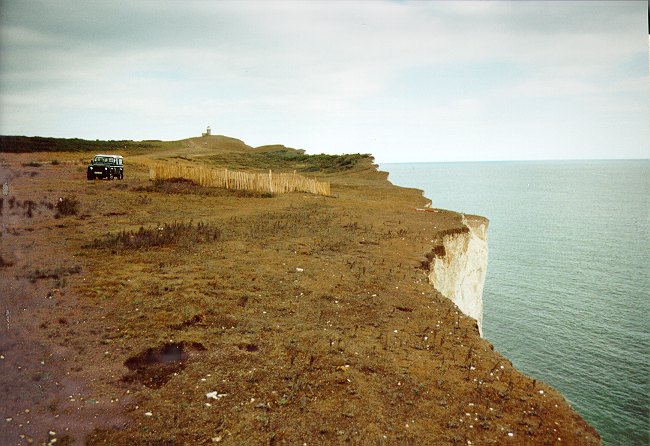It was felt important to establish whether Belle Tout A could be considered as a Neolithic construct, therefore predating the areas of internal Beaker settlement, and to ascertain whether the surviving areas of enclosure C could be interpreted as part of a non-utilitarian, ritual construct or the remains of a field system, agricultural settlement enclosure or stock corral.
Three trenches (B, C and D) were cut across
an apparently well preserved segment of enclosure C, while a single
transect (A) was excavated across the bank and ditch of enclosure A.
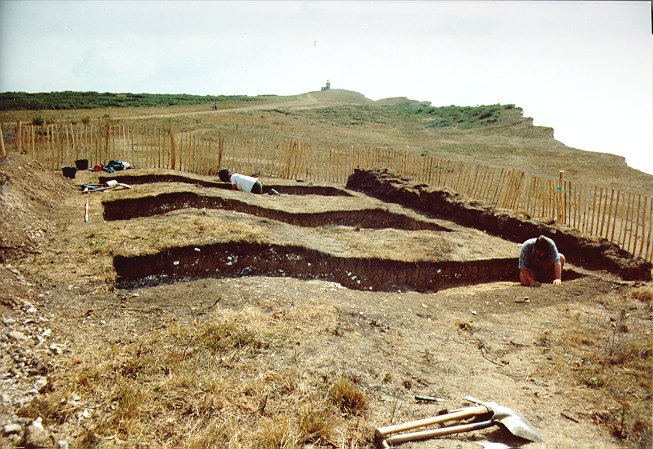 |
The portions of earthwork chosen for limited ground investigation were those areas expected to be lost to coastal erosion within the next decade. In addition the areas chosen were designed to provide maximum information without causing unnecessary disruption to the monument, environmental concerns or public access or enjoyment of the site. |
| Each of the four trenches at Belle Tout were excavated by hand, with turf and topsoil being kept separate from other excavated soils so that complete reinstatement was possible. All stratified ditch fill and bank make-up deposits were carefully removed with finds being recorded by context. All trenches were excavated to chalk subsoil as two 1m strips to facilitate contextual analysis. Chalk subsoil was, in all areas, cleaned to locate any possible subsurface features. | 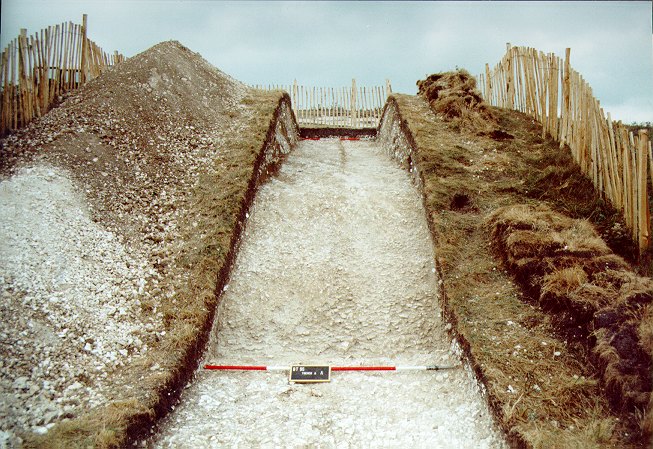 |
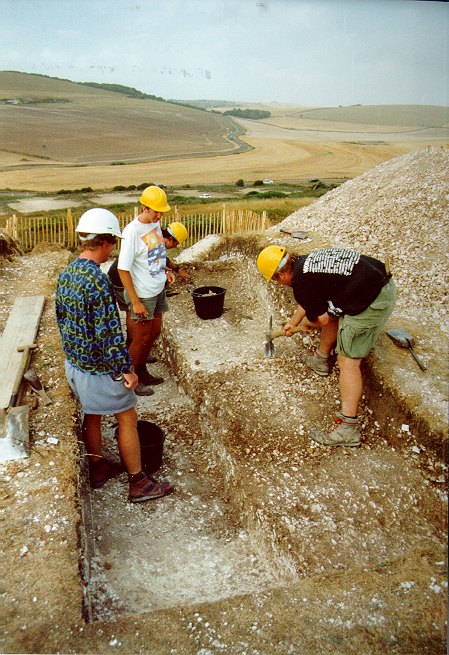 |
All artifactual data resulting from the archaeological investigations
at Belle Tout is currently being processed: the pottery by the School of
Conservation Sciences at Bournemouth University, the flintwork by Chris
Butler of the Mid Sussex Field Archaeology Team, while the environmental
data is at present being processed by Dr Mike Allen of Wessex Archaeology.
|
| In addition to the excavated areas, detailed analysis of all deflation surfaces, where a combination of natural and human erosion has removed all trace of surface vegetation, and soil thrown out from animal burrows was conducted in an attempt to better define internal areas of high archaeological potential (cf Holgate 1986, 244). | 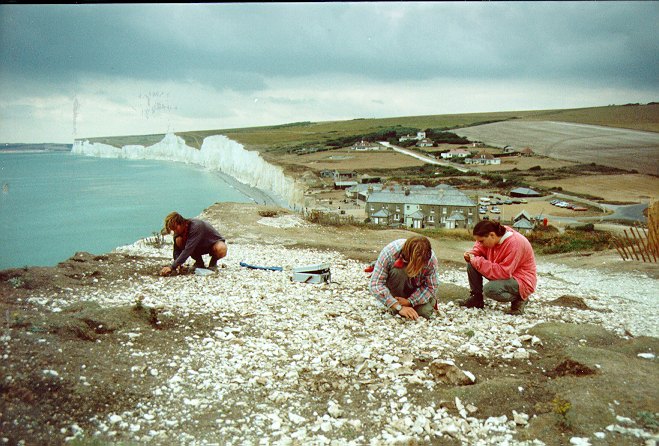 |
Excavation across enclosure A indicates that the rampart consisted,
in its primary phase, of a simple stack of apparently unrevetted turves.
This phase rampart appears to have been (re?)defined by the cutting of
a shallow ditch to the immediate north, and the dumping of chalk rubble
behind.
 |
Preliminary analysis of the flint work assemblage retrieved from primary contexts within the bank has not produced anything that would be out of place within a middle - late Neolithic context. No pottery was recovered from primary contexts and localised soil conditions appear to have prevented the survival of bone.
Preliminary analysis of the molluscan data suggests that the enclosure was constructed in predominately open conditions, possibly at an earlier date than the internal Beaker sites (enclosures B and C). Prior to the detailed analysis of the artifactual and environmental data, a date for the enclosure in the Middle - Later Neolithic, ie predating the Beaker sites and barrows, would appear probable.
Enclosure C and Deflation Surfaces
Sample excavation across a surviving portion of the valley-side bank
and ditch of enclosure C, has demonstrated that the earthworks appeared
to consist of a single phase of construction, without any significant sign
of recut or modification. The bank appears to have slumped naturally.
 |
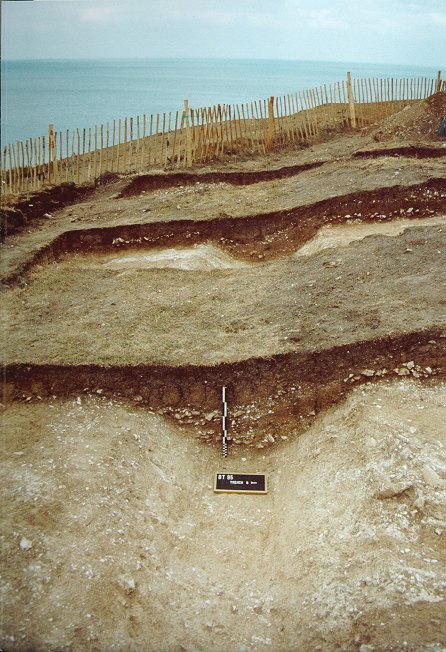 |
What little dating evidence was retrieved does not alter the established Beaker date as forwarded by Toms and Bradley. It is not known, as yet, whether the small amounts of charcoal recovered from the primary bank deposits are sufficient to produce a radiocarbon determination.
Preliminary analysis of the mollusca demonstrated that land snails are
present in low numbers, presumably due to the the silty soils, but they
indicate a pre-existing open environment. Once again, subtle
variations between assemblages from the two enclosures (A and C) may
suggest slightly different land regimes when each enclosure was constructed.
Analysis of artifacts recovered from the deflation surfaces suggests
the presence of relatively undisturbed areas of prehistoric activity between
the surviving Beaker enclosure (C) and the outer Neolithic
earthwork (A). The full nature and extent of these areas remains unknown,
but their presence, at the present cliff edge, and their assured destruction
within the following five to eight years, is here noted.
